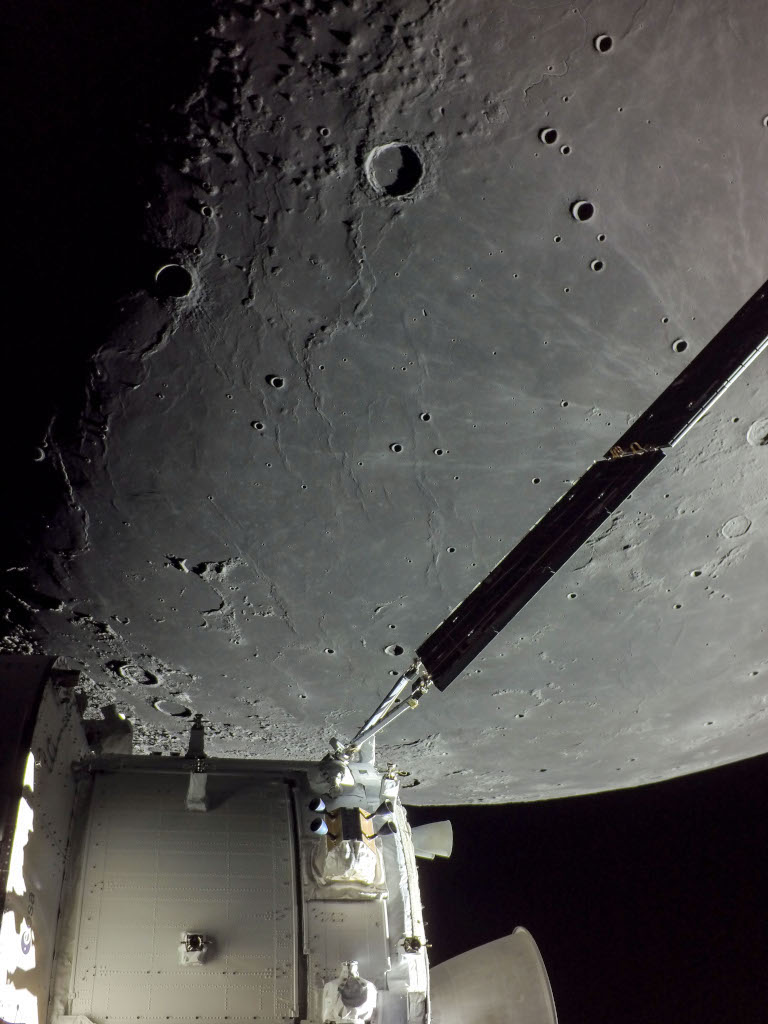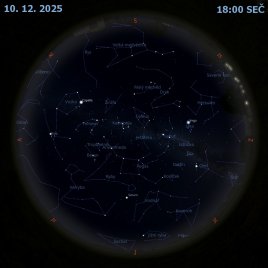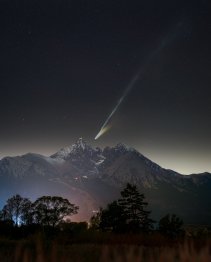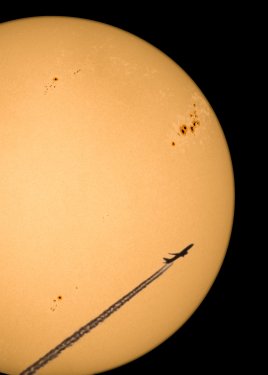Orion a Oceán bouří

Dne 5. prosince 2022 zachytila kamera na palubě kosmické lodi Orion bez posádky tento pohled, když se Orion blížil ke zpátečnímu motorovému průletu kolem Měsíce. Za jednou z vysunutých slunečních baterií Orionu se rozkládá tmavý, hladký terén podél západního okraje Oceánu bouří (Oceanus Procellarum). Oceán bouří vyniká na přivrácené straně Měsíce, jde o největší z měsíčních moří zalitých lávou. Podél levé strany tohoto snímku probíhá měsíční terminátor, rozhraní stínu mezi měsíční nocí a dnem. Nahoře uprostřed je kráter Marius o průměru 41 kilometrů je a vpravo za křídlem slunečních baterií vykukuje kráter Kepler s paprsky. Keplerovy jasné paprsky se táhnou na sever a na západ a dosahují až k tmavému dnu kráteru Marius. Kosmická loď Orion se 11. prosince 2022 vrátila do svého domovského světa. Historická mise Artemis 1 skončila úspěšným dopadem Orionu do vodou zaplaveného Tichého oceánu na planetě Zemi.
Seznam odkazů v popisu
- Flickr.com: NASA Johnson: Orion Approaches Moon for Return Powered Flyby
- APOD: 2022-01-28 Východní moře na západě Měsíce
- EarthSky.org: What is the moon’s Ocean of Storms?
- Wikipedia: Lunar_mare
- Wikipedia: Marius_(crater)
- Wikipedia: Kepler_(lunar_crater)
- Wikipedia: Marius_(kráter)
- NASA: Artemis I – Flight Day 26: Orion splashes down, concluding historic Artemis I mission
- NASA: Apollo 17 Astronauts Capture Iconic Blue Marble 50 Years Ago
NASA Official: Phillip Newman Specific rights apply. NASA Web Privacy Policy and Important Notices
A service of: ASD at NASA / GSFC & Michigan Tech. U.
Odkaz na originální APOD


